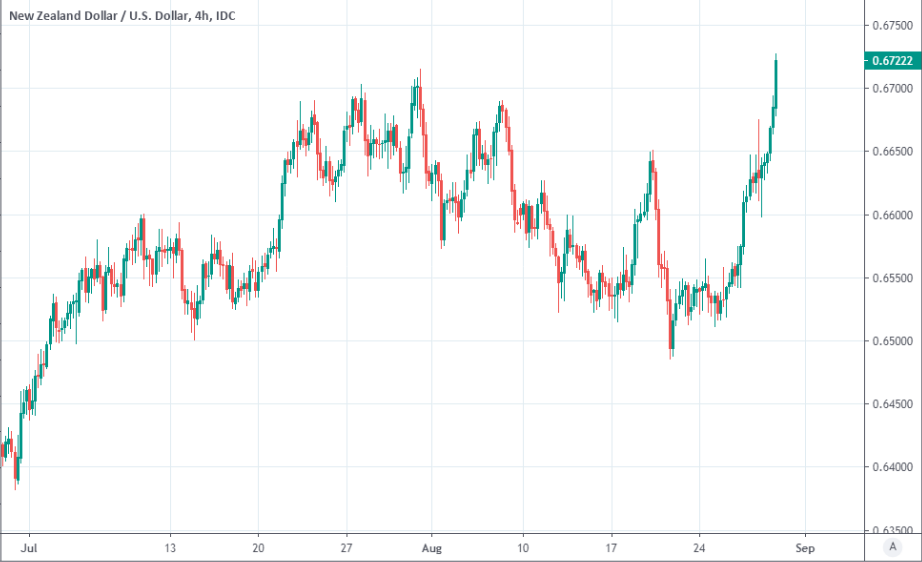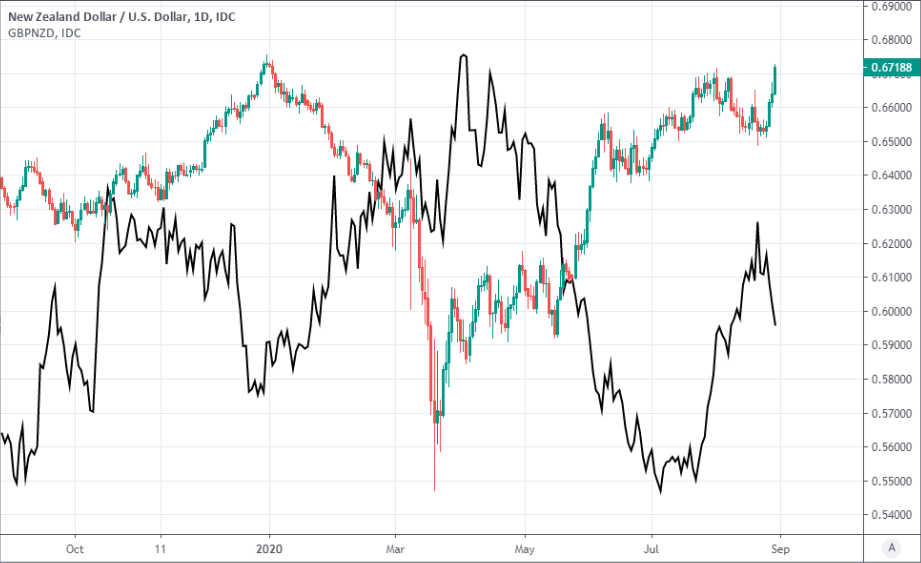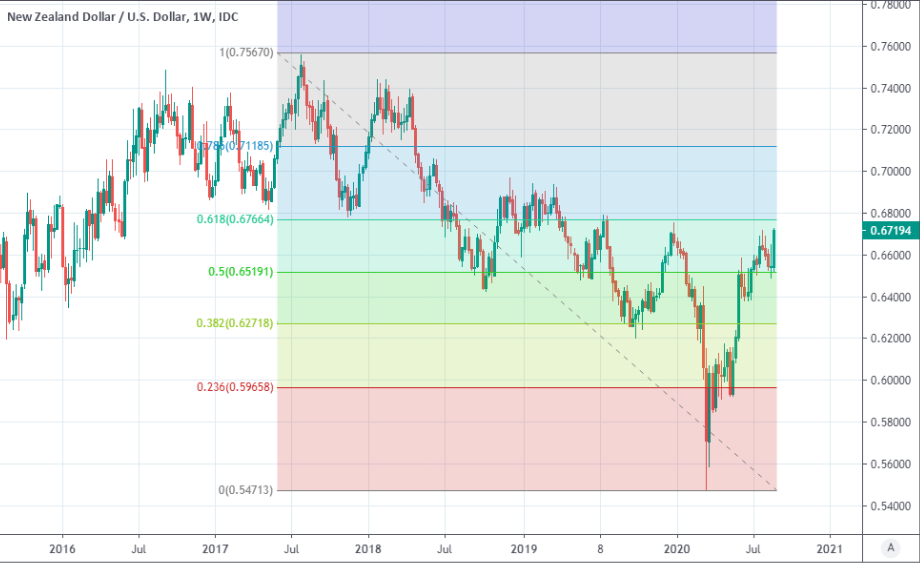New Zealand Dollar Lifts as Fed's New Policy Bag Seen as Offset for RBNZ Pressures
- Written by: James Skinner

Image © Adobe Stock
- GBP/NZD spot rate at time of writing: 1.9832
- Bank transfer rate (indicative guide): 1.9138-1.9277
- FX specialist providers (indicative guide): 1.9535-1.9654
- More information on FX specialist rates here
The New Zealand Dollar advanced on many rivals Friday with its strongest gain coming relative to a retreating U.S. Dollar which may have stolen some Reserve Bank of New Zealand (Fed) thunder, according to ANZ, following a change in monetary policy strategy at the Federal Reserve (Fed).
New Zealand's Dollar was trading higher against all other than the Norwegian Krone, Swedish Krona and Japanese Yen but had risen more than 1% against the U.S. Dollar on Friday, almost double the nearest comparable gain seen in any major Kiwi exchange rate.
This saw the New Zealand Dollar in first place against all majors for the week except for the Aussie, which overtook the Kiwi in Friday trade.
Friday's NZD/USD surge came after the Fed said in the prior session that it would adopt a new inflation targeting framework that some analysts say will see interest rates lower for longer even if inflation rises above the 2% target.
Previously above-target inflation could've been likely to incite an interest rate rise but now the Fed says it will use its monetary policy to actively foster above-target inflation in order to make nice for past as well as present periods where it has fallen short of the objective for 2% price growth.
"The Fed’s new framework does imply that policy will be looser for longer, but most expected this development so we wouldn’t overplay it. And while it is clear the RBNZ wants the NZD lower and will craft policy to try to achieve that goal, the Fed’s move demonstrates how difficult that might be," says Sharon Zollner, chief economist at ANZ. "The Fed’s actions do neutralise the RBNZ’s actions somewhat, and it will support risk appetite."

Above: NZD/USD rate shown at 4-hour intervals.
The new policy approach implies more downside for 'real yields,' or bond yields after inflation has been taken into account, and so has been interpreted as a bearish omen for the greenback by some. Lots has been written by analysts about real yields as a driver of price action of late so parts of the market may be taking cues from changes in them.
Many economists say the Fed's new approach isn't really that much different to its old one and that it'll simply allow the bank more flexibility in terms of how it sets interest rates, but to the extent that it does mean 'real yields' and 'real interest rates' will be lower than they otherwise would have, it could act as a bit of an offset to RBNZ actions and rhetoric that have kept a lid on Kiwi yields and put pressure on the New Zealand Dollar of late.
"NZD/USD caught the updraft from USD selling and general positive risk appetite founded on global policy stimulus from March through June, though has now eased as the currency responds to the RBNZ," says Patrick Bennett, a strategist at CIBC Capital Markets. "We are forecasting a sideways to lower NZD against a still softer USD and look for downside in NZD/JPY, initially targeting 68.10, and also anticipate further gains in AUD/NZD, targeting 1.1400."
The RBNZ raised its quantitative easing allowance from NZ$60bn to NZ$100bn this month and has frequently warned that negative rates or foreign asset purchases (large sales of Kiwi Dollars) may be needed to prop up the economy and safeguard its inflation target, without ruling out a combination of both.

Above: NZD/USD rate shown at daily intervals alongside Pound-to-New Zealand Dollar rate (black line, left axis).
Exchange rates have been widely interpreted as a key motivator of the RBNZ policy bent, given that a stronger currency reduces inflation and impairs export competitiveness, but the Fed's actions have unravelled the RBNZ's previously succesful bid to keep the Kiwi on a downward sloping path.
Nonetheless, a rising NZD/USD does not necessarily mean that other Kiwi exchange rates will also rise, given the others are influenced as much by non-U.S. factors as they are those related to New Zealand. Large Kiwi trade partners include China, Japan and European Union countries.
This is why analysts at CIBC, Commonwealth Bank of Australia and others still anticipated New Zealand Dollar losses relative to other currencies. Kiwi losses on the 'crosses,' in other words.
"Assistant Governor Hawkesby maintained a dovish stance pointing out the similarities between the Fed’s new policy strategy and the RBNZ’s approach to achieve its policy objectives. Hawkesby said “the Committee’s least regret is to set policy where inflation might spend some time above the mid‑point of the target range (1‑3%) in the future.” The implication is the Official Cash Rate will stay low for a long time even if inflation in New Zealand ultimately picks up," says Kim Mundy, a strategist at CBA. "This is a drag for NZD on the crosses."

Above: NZD/USD rate shown at weekly intervals with Fibonacci retracements of




